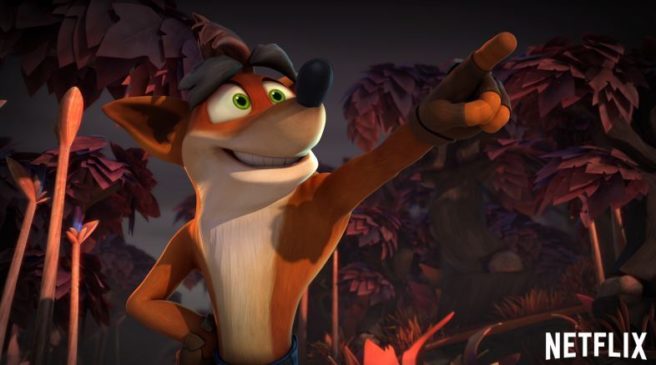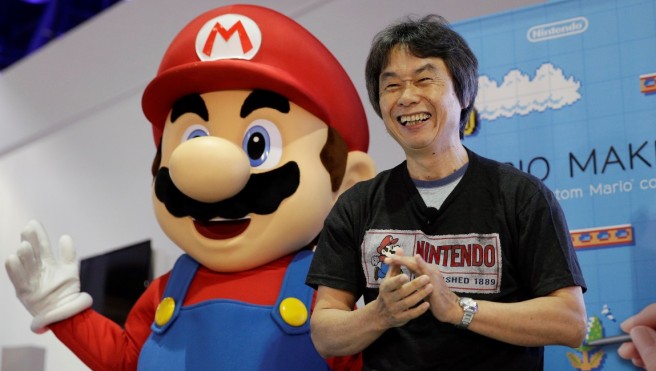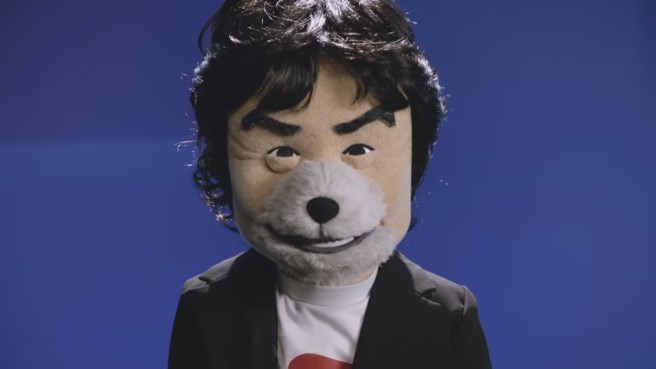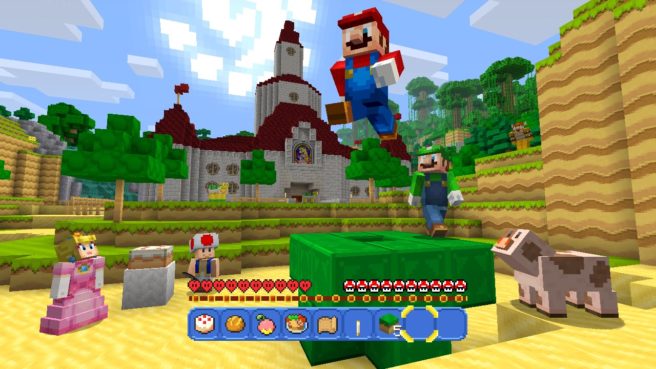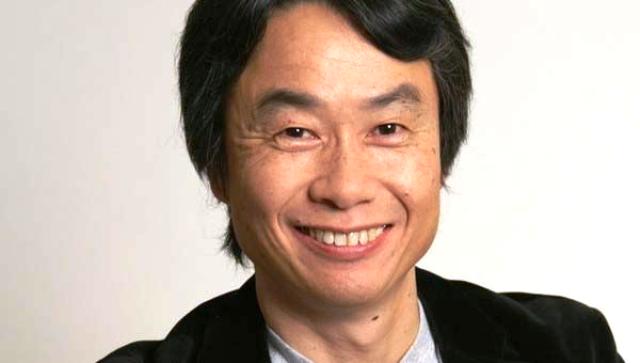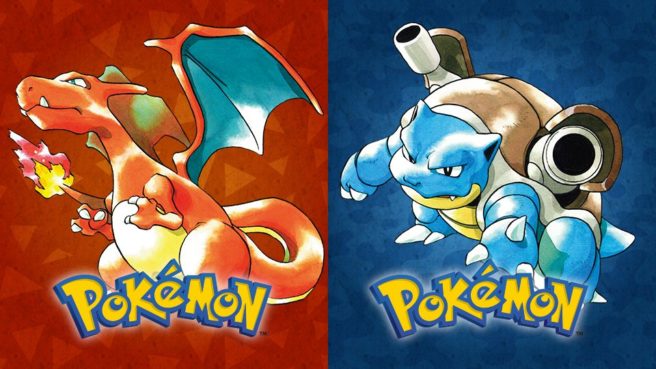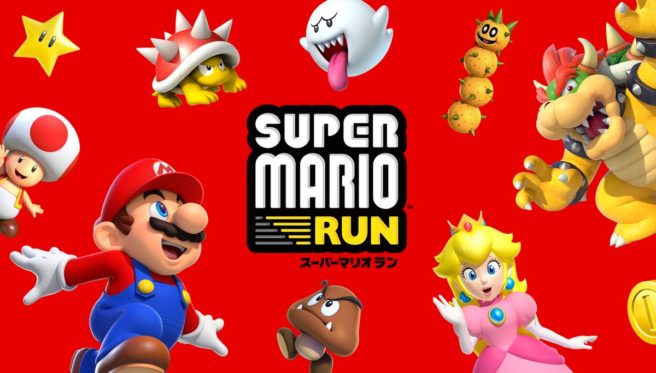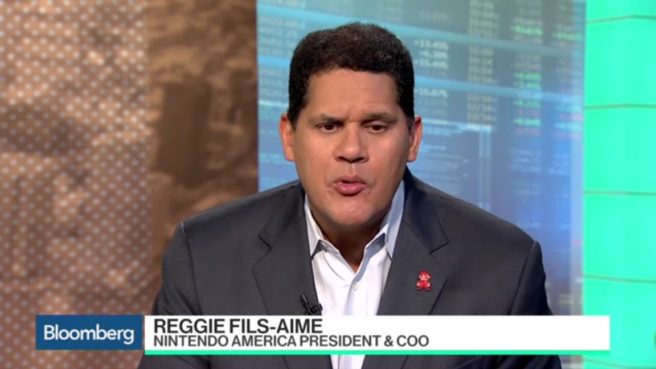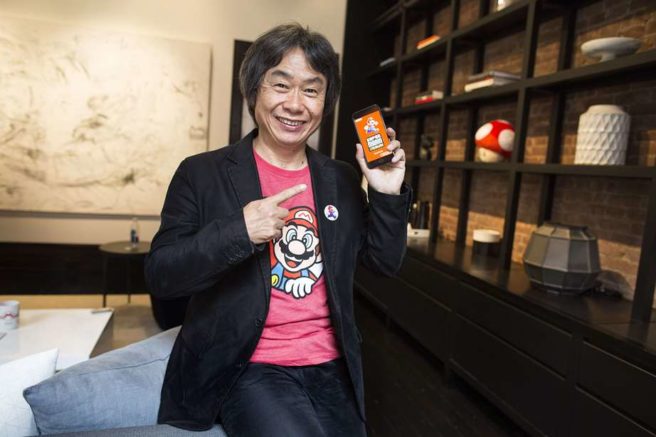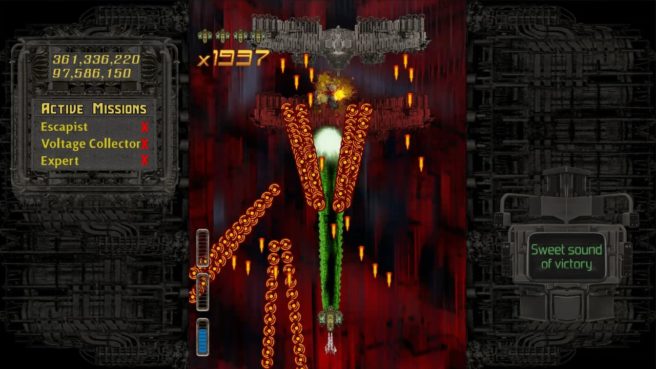Skylanders Academy showrunner on giving Crash Bandicoot a voice in the show
Posted on 9 years ago by Brian(@NE_Brian) in General Nintendo, News | 0 comments
Skylanders Academy premiered on Netflix back in October. After the show appeared, it came as somewhat as a surprise that Crash Bandicoot was in, and even had his own voice.
GameSpot caught up with Skylanders Academy showrunner Eric Rogers to talk about giving the character a voice. He also touched on the mixed reaction and why the news of Crash’s involvement wasn’t talked up beforehand.
Head past the break for Rogers’ comments. Read GameSpot’s full interview here for other topics, including what’s in store for season two of Skylanders Academy.
More: Eric Rogers, interview, Skylanders Academy
Miyamoto on the durability of Mario, says technology will influence the franchise’s future
Posted on 9 years ago by Brian(@NE_Brian) in General Nintendo, News | 2 Comments
Mario is here to stay. As Nintendo’s biggest franchise – and one of the biggest in general – there are plenty of additional adventures in store for the future. Shigeru Miyamoto is unsure about where Mario will be taken down the road, though technology will play an important role.
Miyamoto was asked about where he sees the future of Mario going during the Super Mario Run event at the Apple Store a few days ago. He reflected on a poll conducted after Super Mario Bros. launched, and how Mario was more popular than Mickey Mouse. Miyamoto realized at the time that “Mickey Mouse was a character that had evolved with the evolution of cinema and animation, and so it was then when I felt that if I want Mario to continue to survive as a character, then Mario needs to evolve with technology and video games.” And so Mario’s future will depend on the technology Miyamoto stumbles upon in the future.
Miyamoto’s full comments:
More: interview, Shigeru Miyamoto, top
Miyamoto wants to put more energy into Star Fox, Pikmin
Posted on 9 years ago by Brian(@NE_Brian) in General Nintendo, News | 143 Comments
Fans were able to submit a bunch of questions to Shigeru Miyamoto when he showed up for the Super Mario Run event at the Apple Store in SoHo a few days ago. At one point, he was asked if there was any character he wanted to develop or felt very passionate about that didn’t make it. He pointed to two franchises: Fox McCloud (Star Fox) and Pikmin.
Miyamoto said:
“Yeah, I always wanted Fox McCloud to be a bit more popular than he is. But I think one more would be Pikmin. So I think these two, I’ll need to put some more energy into.”
With Pikmin, we know that a new side-scroller is coming to 3DS in 2017. Miyamoto has also previously mentioned Pikmin 4 which one would assume is a different game.
More: interview, Pikmin, Shigeru Miyamoto, Star Fox, top
Miyamoto says Nintendo conducted Minecraft-like experiments on N64, some designs “were very similar”
Posted on 9 years ago by Brian(@NE_Brian) in General Nintendo, News | 25 Comments
There’s one additional excerpt from Glixel’s new interview with Shigeru Miyamoto that we wanted to give the spotlight to.
As part of the discussion, Miyamoto was asked if he’s playing games other than the mobile title Neko Atsume. This led him to speak about his enjoyment and respect of Minecraft.
Interestingly, Miyamoto told Glixel that Nintendo conducted “a lot of experiments that were similar to that back in the N64 days”. There were apparently “some designs that were very similar.”
Miyamoto’s full words:
“I do like Minecraft, but really more from the perspective of the fact that I really feel like that’s something we should have made. We had actually done a lot of experiments that were similar to that back in the N64 days and we had some designs that were very similar. It’s really impressive to me to see how they’ve been able to take that idea and turn it into a product.”
More: interview, Minecraft, Shigeru Miyamoto, top
Miyamoto on his role with development, inspirations, younger devs on Switch, Apple/Nintendo similarities, more
Posted on 9 years ago by Brian(@NE_Brian) in General Nintendo, News, Switch | 18 Comments
Glixel has a new interview up with Shigeru Miyamoto. But whereas most discussions with Nintendo’s legendary developer have focused specifically on Super Mario Run, this one is a bit more general.
While speaking with the site, Miyamoto spoke about working with his core team of four for thirty years, his role with development, inspirations and influences, relationship with Mario, and the similiarties between Apple and Switch. He also mentioned that younger staff “are taking the lead on Switch development”.
We’ve rounded up the notable responses from Miyamoto below. For the full interview, head on over to Glixel.
More: interview, Shigeru Miyamoto, top
Pokemon devs on Red/Blue names for the west and localization difficulties, limit on new Pokemon per generation, more
Posted on 9 years ago by Brian(@NE_Brian) in General Nintendo, News | 5 Comments
In its issue last month, Retro Gamer published a large feature on Pokemon which takes a look back at the series’ earliest days up to the present. It included a number of comments from people with big connections to the franchise, including Game Freak’s Junichi Masuda and Ken Sugimori. Masuda is well-known as the producer at Game Freak while Sugimori drew the original 151 Pokemon.
Masuda in particular shared some interesting comments about the process in which Game Freak went to work on the original games, how the team was limited by the Game Boy hardware, and localization overseas. Sugimori talked about why each new Pokemon generation tends to see no more than 100 creatures.
We’ve included these statements from both Masuda and Sugimori below.
More: interview, Junichi Masuda, Ken Sugimori, Pokemon, top
Miyamoto on Mario Run – Kingdom Builder inspiration, why it’s the right time for Mario on mobile, more
Posted on 9 years ago by Brian(@NE_Brian) in Mobile, News | 2 Comments
TIME has gone up with its own interview about Super Mario Run. Unsurprisingly, it was Shigeru Miyamoto answering the questions.
Miyamoto actually talked about quite a bit here. He spoke about how Nintendo decided on which gameplay elements to include, the different playable characters, the idea behind Kingdom Builder, and why it’s the right time for Mario to appear on mobile.
You can read up on a number of Miyamoto’s important responses below. Visit TIME here for the full discussion.
More: interview, Shigeru Miyamoto, top
Reggie on Super Mario Run for Android, says VR has potential but not there yet, more
Posted on 9 years ago by Brian(@NE_Brian) in General Nintendo, Mobile, Videos | 7 Comments
Bloomberg recently spoke with Nintendo of America president Reggie Fils-Aime, and has now posted its full interview. Nintendo on mobile was discussed, including when we’ll see Super Mario Run on Android. Virtual reality was a topic as well. Listen to what Reggie had to say below.
More: interview, Reggie Fils-Aime, Super Mario Run, top
Miyamoto – Nintendo felt strongly about paying just once for Mario Run, bringing back lapsed fans with mobile
Posted on 9 years ago by Brian(@NE_Brian) in Mobile, News | 2 Comments
During an interview with Financial Post, Shigeru Miyamoto touched on how Nintendo is handling pricing with Super Mario Run. He and the rest of the company “felt pretty strongly “that we needed to have a form of monetization where you would simply pay once and be able to play as much as you like.”
Miyamoto explained:
“When we first started talking about bringing Nintendo games and Mario to iPhone, we talked a lot about what we would do from a monetization standpoint and debated this even with Mr. Iwata back in those days (Satoru Iwata was CEO of Nintendo until his death in 2015).
Certainly there are a lot of different ways that you can monetize a game. In Japan there’s a mechanic that’s referred to as “gacha,” where you keep spending small amounts for a raffle or lottery to get rare items. There are other ways that you can charge people repeatedly to get money. And there are games that rely on a very small number of people who pay a lot of money and the rest of the players play for free.
More: interview, Shigeru Miyamoto, top
Teslapunk hitting the European Wii U eShop next Thursday
Posted on 9 years ago by Brian(@NE_Brian) in News, Wii U eShop | 0 comments
Teslapunk just arrived on the North American Wii U eShop today. In Europe, we now know that it’s due out next week – specifically December 15. The game will cost €9.99.
Here’s a look at the eShop listing:
#Teslapunk on #EU #WiiU #eShop https://t.co/CGXYSyKfeQ @klutzgames @GoNintendoTweet @NinEverything #indiegame #indie #indiedev #gamedev pic.twitter.com/TM3xgrqfQM
— Nintendo Hall (@NintendoHall) December 8, 2016
